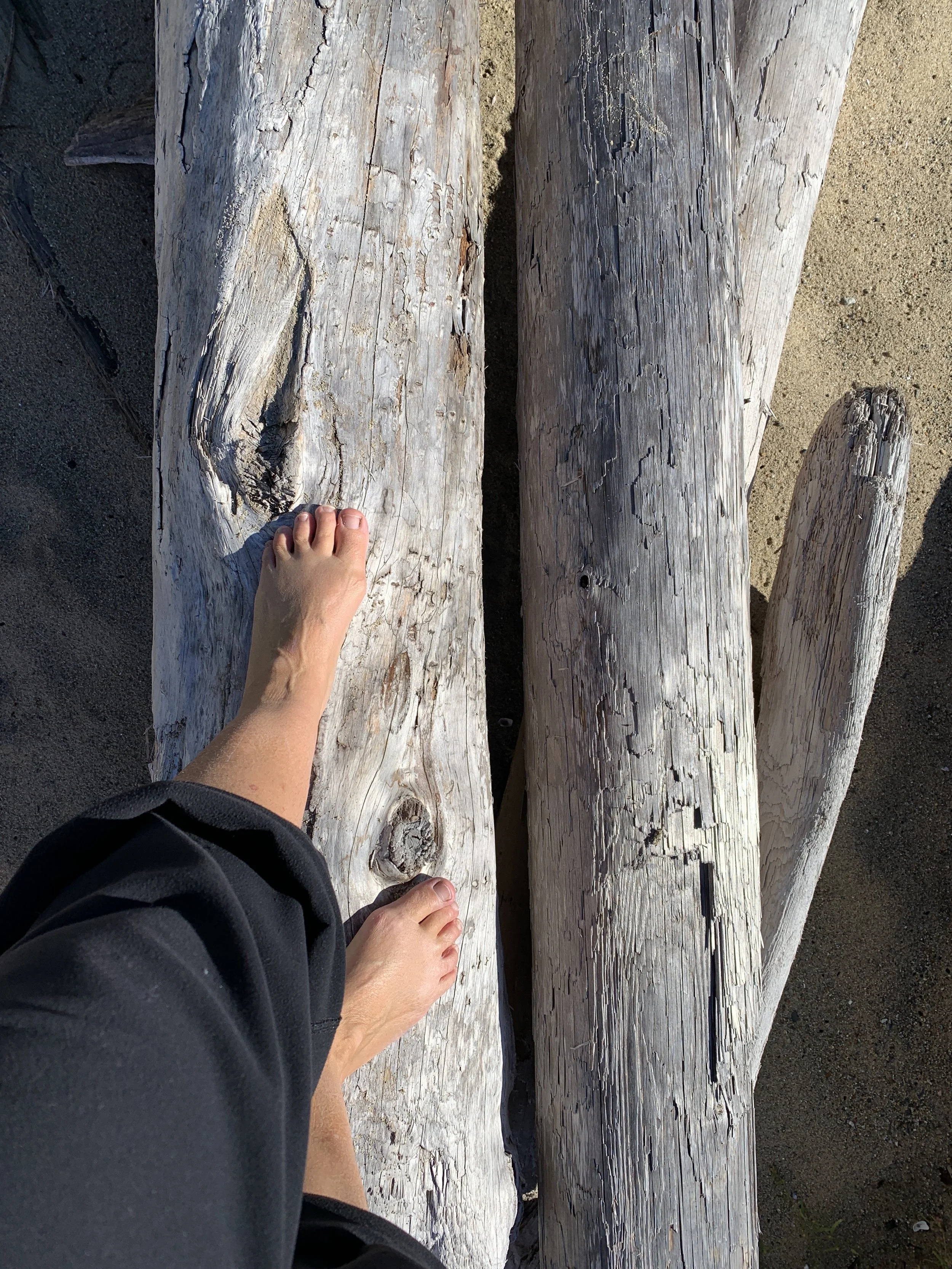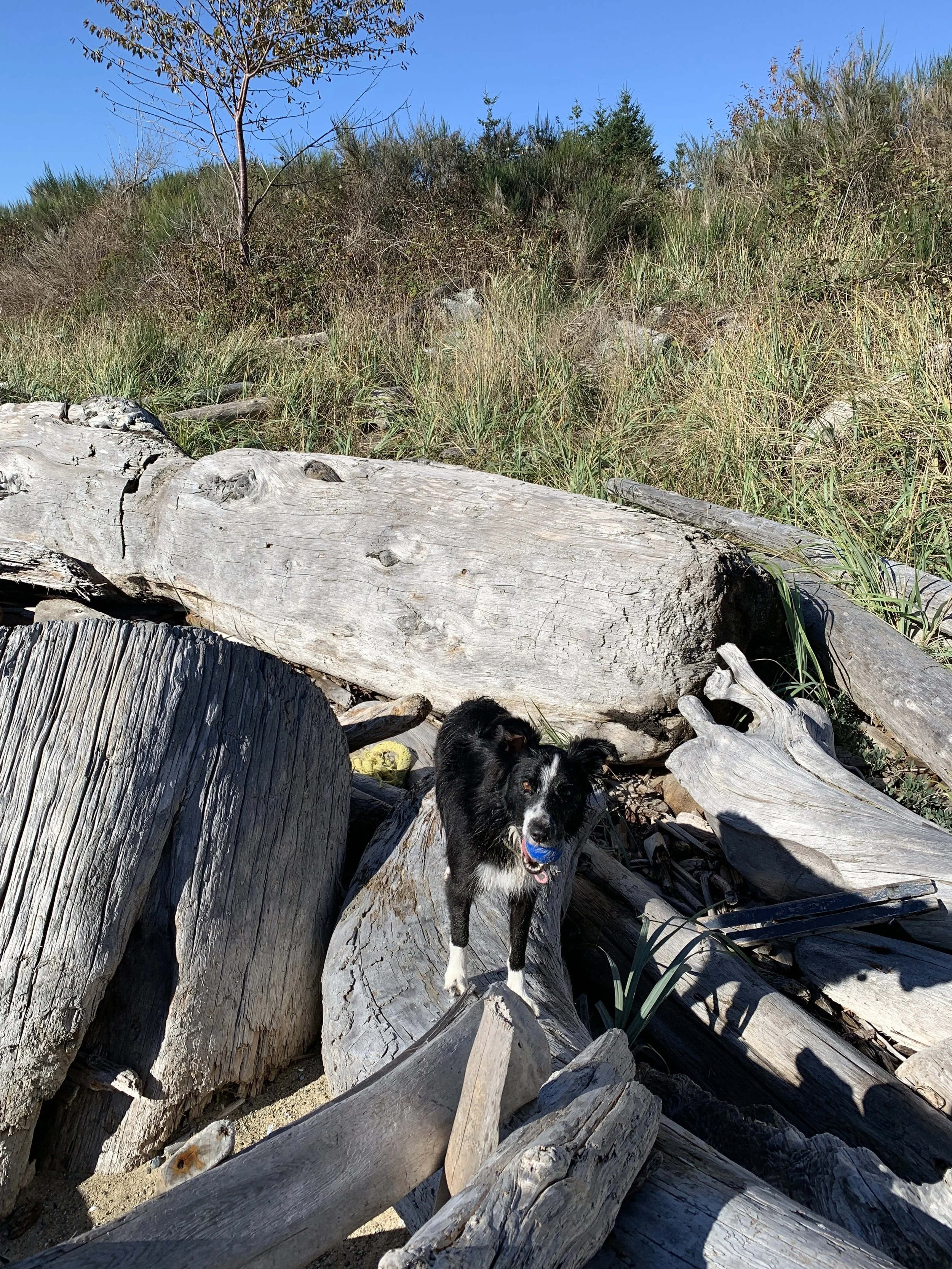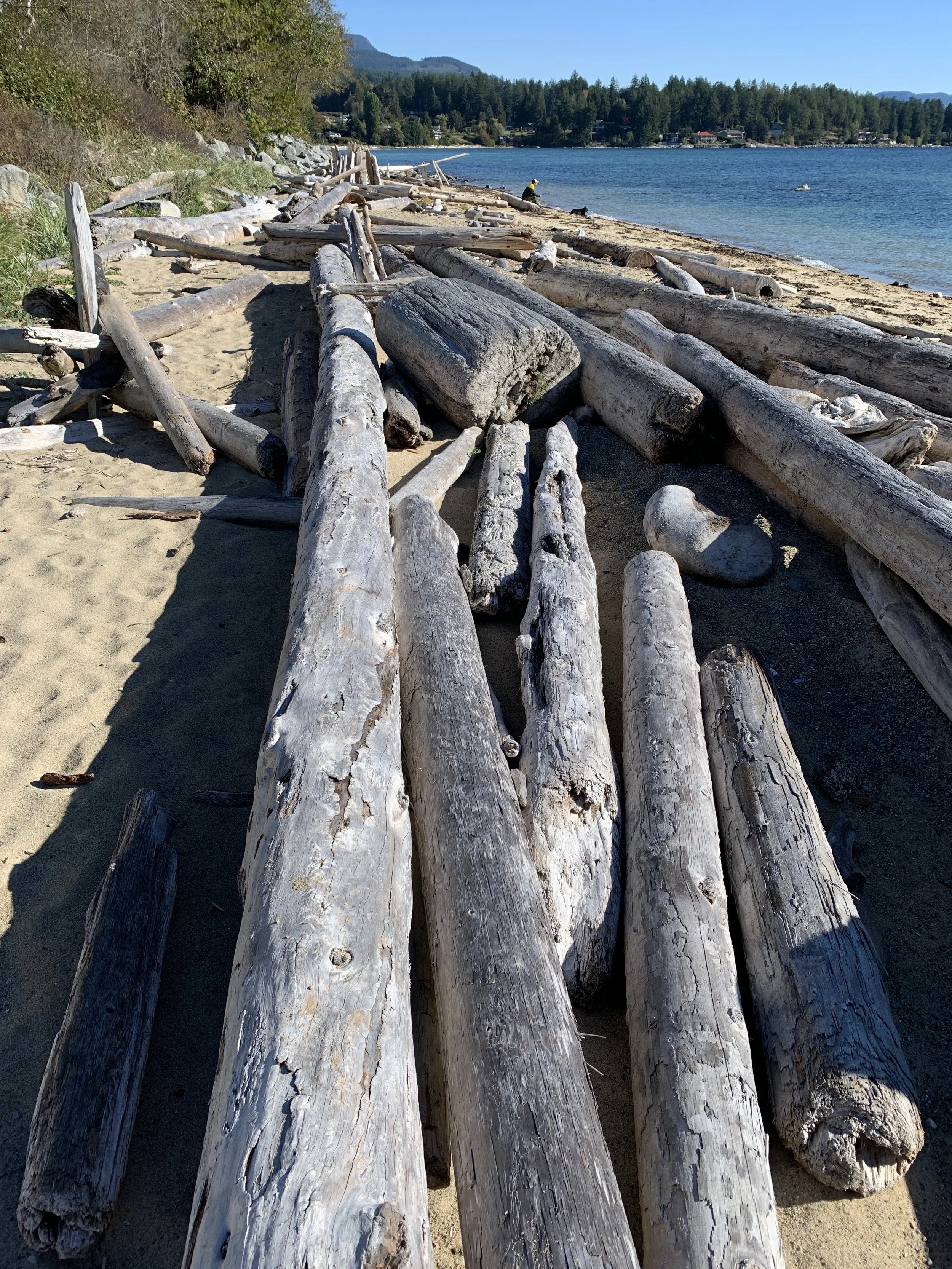Reversing on Driftwood
Although it’s Autumn here on B.C.’s West Coast once the sun comes out it’s still warm enough to remove our shoes and play on the beach driftwood! For me there’s no better feeling than tearing off my shoes and socks and gleefully exposing my feet to the Autumn air. I set myself up with a little game — how far can I make it along the piles of driftwood until I have to walk on the sand? It’s great for balance and dexterity of the feet right through to the somatic centre, the solar plexus.
Our feet have evolved over millions of years on a planet with no roads or pavements. This means that over time the adaptability of our feet is no longer untilised; the deep muscles that support our feet’s arches can weaken which eventually leaves only the superficial, non muscular plantar fascia responsible for preventing the collapse of the foot. Excess stress on the plantar fascia commonly leads to plantar fasciitis and heel spurs. Keeping our feet healthy and responsive by going barefoot when possible, wearing thinner footwear and regularly practising somatic movements is the key to a healthy feet and rest of the soma!
Remember: the feet connect to centre — in Somatics we do not think of individual muscles as such but full body patterns. The most common pattern of muscular contraction when it comes to plantar fasciitis is assymetry —the signature visual is a hiked hip, twisted pelvis and ribcage which also involves tight glute muscles and low back on the same side as the painful foot and tight lower leg muscles.
Pandiculation re-educates muscles that have learned to stay tight due to overuse, stress reflexes or accidents. We pandiculate from centre to periphery — addressing the muscular imbalances in the centre of the body first, then releasing muscles of the lower leg for smooth, easier movement. Practising like this regularly actually prevents painful conditions like plantar fasciitis from developing in the first place. As does going barefoot on driftwood, on sand, inside our homes… wherever and whenever possible. Our feet are rich with sensory neurons and can educate the rest of the system in how to regain pliability and freer movement. They are extremely intelligent!
I stepped my game up a level by playing with reversing — could I keep my balance walking both forwards and backwards on the long pieces of driftwood? I found I really had to rely on the sensory information coming from my the soles of my feet, I truly had to ‘feel’ my way. I felt my feet curling intelligently around the warm, rough wood and if I softened at the centre it became easier. I imagined my feet beginning at the solar plexus, softening my belly, back and waist muscles allowed the movement to become easier, allowing the head to bobble gently, the shoulders to move, softening the hands.
Moshe Feldenkrais, Thomas Hanna’s teacher described reversability as the the ability to stop, reverse, or change the direction of a movement at any point with minimal effort or hesitation, signifying a high level of physical and neurological control. If we can go back where we’ve come from in a movement, we can probably go in another direction as well! This indicates a high level of neurological and physical organisation in a soma — a general ability to have a wide variety of movement options available at any time. Freedom!
Keep pandiculating, playing, keep exploring — it is food for our brains and our overall intelligence as human beings. As Feldenkrais said:
“Movement is life. Life is a process. Improve the quality of the process and you improve the quality of life itself.”


